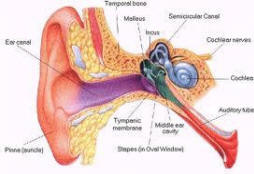Sam J. Marzo, M.D.
Assistant Professor
Department of Otolaryngology B Head and Neck Surgery
Loyola University
Return to page -1 of ear disorders
Vestibular Neuronitis (VN):
The second most common cause of vertigo is Vestibular Neuronitis (VN). This is characterized by the acute onset of vertigo sometimes associated with nausea, and vomiting lasting hours or even days. There can be hearing loss also, in which case the condition is termed "labyrinthitis." The vertigo usually dissipates over several days, and imbalance can then persist for several weeks or months as recovery ensues. VN is believed to be secondary to a viral inflammation of the peripheral vestibular system. In half of all cases, there has been a recent upper respiratory infection. The disease is usually self-limiting.
Meniere’s Disease (MD):
The third most common cause of vertigo is Meniere’s Disease (MD). Meniere’s disease is characterized by recurring attacks of vertigo lasting approximately thirty minutes. Meniere’s Disease is associated with unilateral hearing fluctuation, aural pressure, and tinnitus. In 30% of cases, Meniere’s disease is bilateral. Roughly 80% of patients with Meniere’s disease do well with medical therapy. Medical therapy includes a low salt diet (less than 2000 milligrams of sodium/day), a potassium-sparing diuretic, and sometimes vestibular suppressants. The other 20% of patients with refractory vertigo secondary to Meniere’s disease can likely benefit from surgical therapy.
It is well know that certain aminoglycoside antibiotics are "ototoxic", toxic to the cochlear and vestibular systems. Intramuscular streptomycin was found to be effective in relieving vertigo for some patients with bilateral Meniere’s disease. Although many patients receiving intramuscular streptomycin had relief of vertigo, some patients developed vestibular toxicity. The vestibular toxicity manifested as oscillopsia (defined as the vertical movement of the horizon when walking), ataxia, and imbalance in dark spaces (i.e., when visual information available was limited or non-existent) or when navigating uneven terrain. To decrease these systemic side effects, streptomycin (and later gentamicin) was administered to the inner ear via a transtympanic approach with promising results.
With the success of intratympanic gentamicin therapy for Meniere’s disease, steroid therapy was later introduced. Intratympanic steroids were later applied favorably to patients with sudden sensorineural hearing loss (1). Since then, several administration systems have been developed (2). Intratympanic therapy has its origins in the medical treatment of Meniere’s disease.
continued to
inner ear page
